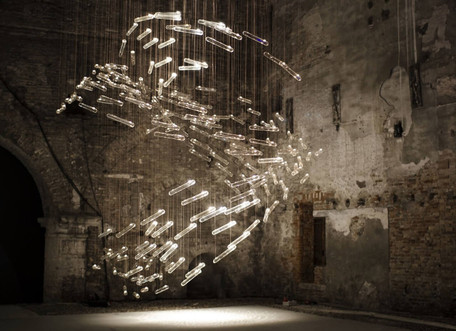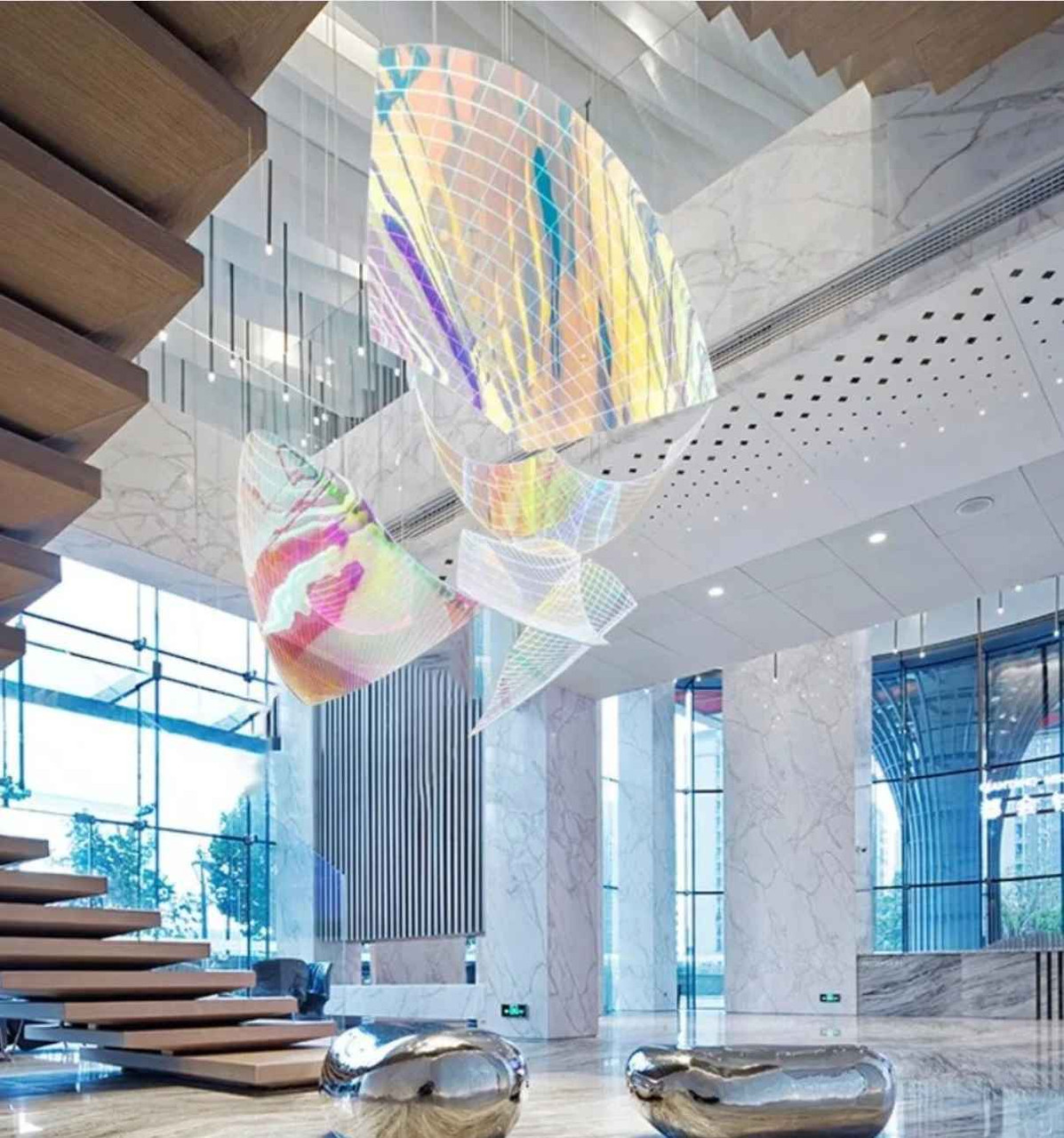Celebrating 21st Century Design: The Evolution of Glass Technology from Float Glass to OLEDs
Jul 31, 2024
Celebrating 21st Century Design: The Evolution of Glass Technology from Float Glass to OLEDs
In the world of architecture and design, the 21st century has witnessed remarkable advancements in materials and technology. One such area that has undergone a transformative evolution is glass technology. From the traditional float glass to the cutting-edge Organic Light-Emitting Diodes (OLEDs), this journey has not only reshaped the way architects and designers think but has also revolutionized the aesthetics and functionality of modern structures. Whether you are an architect, a house self-builder, or an architectural designer, this blog post is your guide to understanding how glass technology has ushered in a new era of design possibilities.
The Foundation: Float Glass
Float glass, often referred to as "sheet glass" or "plate glass," serves as the foundation for the glass industry. It is manufactured by floating molten glass on a bed of molten tin, creating a smooth and uniform sheet. This process was a game-changer in the early 20th century, allowing for mass production of flat glass.
Advantages of Float Glass
- Clarity: Float glass is known for its optical clarity, making it an ideal choice for windows and glass facades in architectural design.
- Cost-Effective: Mass production made it affordable and accessible for various applications.
- Versatility: Float glass can be tempered, laminated, or coated for specific architectural requirements.
Limitations of Float Glass
- Thermal Performance: Limited insulation properties, making it less energy-efficient.
- Design Constraints: Limited scope for creativity due to its traditional flat and transparent nature.
Tempered and Laminated Glass: Advancing Durability and Safety
To address some of the limitations of float glass, tempered and laminated glass were introduced. Tempered glass is heat-treated to increase its strength and resistance to breakage. When it does break, it shatters into small, relatively harmless pieces, reducing the risk of injury. Laminated glass, on the other hand, consists of two or more layers of glass bonded together with an interlayer, often made of polyvinyl butyral (PVB). This interlayer holds the glass together when shattered.
Applications in Design
- Safety: Tempered and laminated glass enhance safety in architectural design, reducing the risk of injury from glass breakage.
- Structural Elements: These glasses are often used in balustrades, canopies, and other structural elements.
Low-E and Reflective Coatings: Energy Efficiency Matters
As sustainability and energy efficiency became paramount in architectural design, the development of low-emissivity (Low-E) and reflective coatings was a game-changer. These coatings improve the thermal performance of glass, reducing heat transfer and enhancing insulation.
Benefits of Low-E and Reflective Coatings
- Energy Efficiency: Reduced heat loss in winter and heat gain in summer, leading to lower energy bills.
- Glare Reduction: Improved comfort and reduced glare in interior spaces.
- UV Protection: Protection against UV radiation, preventing furniture and artwork from fading.
Switchable Glass: Transforming Spaces with Privacy and Transparency
Switchable glass, also known as smart glass or privacy glass, is a modern innovation that allows the glass to change its transparency or opacity at the touch of a button or through automated systems. This technology is a game-changer for architectural design, offering versatility in controlling natural light and privacy.
Applications in Architectural Design
- Privacy: Instantly switch from transparent to opaque, offering privacy in bathrooms, meeting rooms, and bedrooms.
- Daylight Control: Regulate the amount of natural light entering a space, reducing the need for artificial lighting.
OLEDs: The Future of Lighting and Design Integration
Organic Light-Emitting Diodes (OLEDs) have revolutionized the way we think about lighting and design integration. Unlike traditional lighting sources, OLEDs are thin, flexible, and emit light over a surface, rather than from a point source. This technology has opened up a world of possibilities for architects and designers.
Advantages of OLEDs
- Thin and Lightweight: OLEDs are incredibly thin and lightweight, making them versatile for integrating into various design elements.
- Uniform Illumination: They provide uniform illumination across the entire surface, eliminating harsh shadows.
- Energy-Efficient: OLEDs are energy-efficient and have a long lifespan.
Applications in Architectural Design
- Custom Lighting: Create unique and artistic lighting installations that blend seamlessly with architectural elements.
- Art Integration: Illuminate artwork and sculptures with even, high-quality light.
Case Studies: Realizing 21st Century Design with Glass Technology
Let's explore some real-world examples of how architects and designers have harnessed the power of modern glass technology:
1. The Crystal, London
"The Crystal" in London is a sustainable events venue and exhibition center. It showcases sustainable technologies and features a striking glass façade that incorporates Low-E coatings to maximize energy efficiency. The use of smart glass allows for optimal daylight control and privacy during events.
2. Louvre Abu Dhabi, UAE
The Louvre Abu Dhabi boasts a stunning dome comprised of thousands of star-shaped geometric patterns. These patterns are illuminated using OLED technology, creating a breathtaking and immersive experience for visitors. The use of OLEDs allows for precise control over the lighting effects, enhancing the museum's ambiance.
Designing with 21st Century Glass Technology: Tips and Considerations
For architects, house self-builders, and architectural designers looking to harness the potential of modern glass technology, here are some valuable tips and considerations:
- Collaborate with Experts: Partner with glass manufacturers and experts in glass technology to explore the latest innovations and possibilities.
- Consider Sustainability: Prioritize energy-efficient solutions to align with sustainable design principles.
- Balance Aesthetics and Functionality: Explore creative ways to integrate glass elements that enhance both the aesthetics and functionality of a space.
- Stay Informed: Keep up-to-date with the latest advancements in glass technology and their applications.
Conclusion
The evolution of glass technology from traditional float glass to cutting-edge OLEDs has undeniably transformed the world of architecture and design in the 21st century. Architects, house self-builders, and architectural designers now have a vast array of options to create spaces that are not only aesthetically pleasing but also energy-efficient, safe, and adaptable to various needs.
As we continue to push the boundaries of what is possible with glass technology, we can anticipate even more exciting innovations that will redefine the future of architectural design. So, embrace these advancements, and let your creativity shine through the glass in the 21st century.


